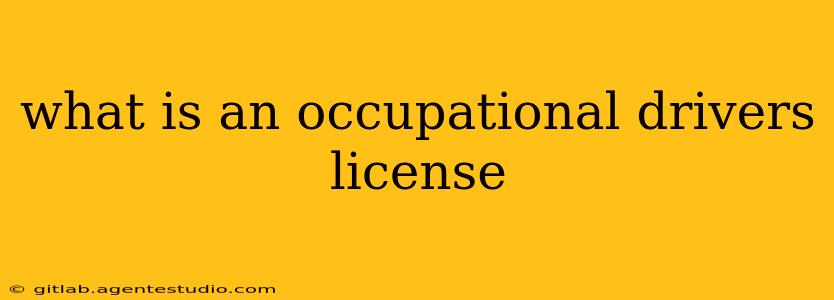An Occupational Driver's License, commonly known as a Commercial Driver's License (CDL), is a special type of driver's license required in the United States and Canada to operate certain types of motor vehicles for commercial purposes. This isn't just about driving a large truck; the specifics of what requires a CDL are quite detailed. Understanding what constitutes a CDL and its various classifications is crucial for anyone considering a career involving commercial driving.
What Vehicles Require a CDL?
The need for a CDL hinges on several factors, primarily the vehicle's gross vehicle weight rating (GVWR) and what it's carrying. Generally, a CDL is necessary if you're operating a vehicle that:
- Exceeds a certain weight: The GVWR, or the maximum weight of the vehicle when fully loaded, is a key determinant. Specific weight limits vary by state and jurisdiction, but generally, exceeding 26,001 pounds requires a CDL.
- Transports hazardous materials: Regardless of weight, transporting hazardous materials often necessitates a CDL and additional endorsements.
- Carries 16 or more passengers: Including the driver, if your vehicle is designed to carry more than 15 passengers, a CDL is typically required.
- Is used to transport passengers for compensation: This includes school buses, charter buses, and other vehicles carrying passengers for hire.
Understanding CDL Classifications
A CDL isn't a one-size-fits-all license. Different classes and endorsements specify the types of vehicles you're qualified to operate. Some common classifications include:
- Class A: Combines vehicles with a GVWR of 26,001 or more pounds with a towed trailer weighing more than 10,001 pounds. Think semi-trucks hauling large loads.
- Class B: Vehicles with a GVWR of 26,001 or more pounds, or vehicles towing a trailer under 10,001 pounds. Examples include large trucks and buses.
- Class C: Vehicles that don't fall under Class A or B but still require a CDL due to passenger capacity or hazardous material transportation.
Endorsements: CDLs can also have endorsements added to expand the types of vehicles or cargo a driver can handle. These endorsements might cover:
- Hazardous materials (H): Allows the transportation of hazardous materials.
- Passenger (P): Authorizes the operation of passenger-carrying vehicles.
- School bus (S): Specifically for operating school buses.
- Tanker (N): For vehicles carrying liquids or gases in bulk.
- Doubles/Triples (T): For operating vehicles with double or triple trailers.
Obtaining a CDL
The process of obtaining a CDL involves several steps, including:
- Meeting eligibility requirements: This typically includes age restrictions (usually 21 for interstate commerce), a valid driver's license, and passing a physical examination.
- Completing a CDL training program: While not mandatory in all jurisdictions, completing a professional CDL training program is highly recommended and can significantly increase your chances of passing the licensing tests.
- Passing written and driving tests: These tests assess your knowledge of commercial driving regulations and your driving skills.
Maintaining Your CDL
Maintaining a valid CDL requires ongoing compliance with regulations, including regular medical examinations and adherence to hours-of-service rules. Violations can lead to suspension or revocation of your CDL.
This information provides a general overview; specific requirements can vary depending on the state or province. Always consult your local Department of Motor Vehicles (DMV) or equivalent agency for the most accurate and up-to-date information. The specific requirements and processes can be complex, so thorough research and preparation are crucial for anyone seeking a CDL.

